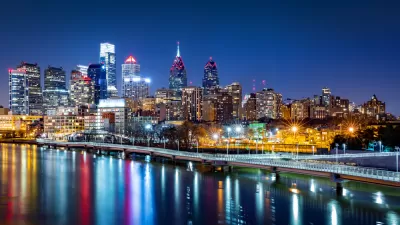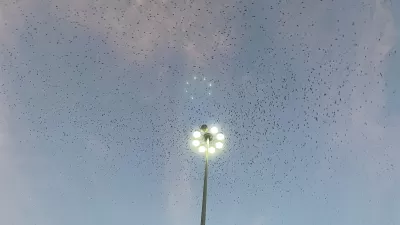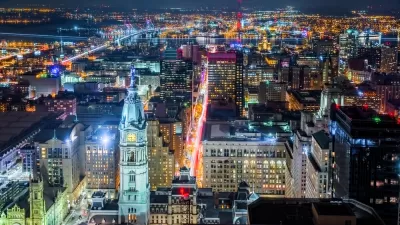More than 15 years of advocacy, and one particularly galvanizing bird kill event, have created the momentum necessary for widespread adoption of the Lights Out Philly initiative.

Nate Berg reports that the city of Philadelphia is finally taking collective action to prevent bird deaths from collisions with buildings.
"Beginning April 1, and running for the duration of both the spring and autumn bird migration periods, buildings across Philadelphia will be voluntarily turning off their lights at night," writes Berg.
The voluntary effort is the result of advocacy work by Audubon Mid-Atlantic dating back to 2006. But the final straw was a particularly devastating episode in October 2020, when a "rare convergence of the semiannual migration period and bad weather," along with lights left on buildings, combined to kill more than 1,000 birds in one night.
Bird deaths resulting from collisions with buildings are nothing new. Seemingly clear flight paths seen through the windows of buildings, reflections of trees and other potential habitats, and the lure of bright and confusing lights during nighttime migration all contribute to a shocking number of bird-building crashes. Researchers estimate that collisions with buildings cause up to one billion bird deaths annually in the United States, making a very clear argument for why buildings and cities need to be designed with birds in mind.
Berg describes more about the voluntary initiative called Lights Out Philly in the source article linked below.
FULL STORY: Philadelphia is about to go completely dark at night. Here’s why

Planetizen Federal Action Tracker
A weekly monitor of how Trump’s orders and actions are impacting planners and planning in America.

Map: Where Senate Republicans Want to Sell Your Public Lands
For public land advocates, the Senate Republicans’ proposal to sell millions of acres of public land in the West is “the biggest fight of their careers.”

Restaurant Patios Were a Pandemic Win — Why Were They so Hard to Keep?
Social distancing requirements and changes in travel patterns prompted cities to pilot new uses for street and sidewalk space. Then it got complicated.

Platform Pilsner: Vancouver Transit Agency Releases... a Beer?
TransLink will receive a portion of every sale of the four-pack.

Toronto Weighs Cheaper Transit, Parking Hikes for Major Events
Special event rates would take effect during large festivals, sports games and concerts to ‘discourage driving, manage congestion and free up space for transit.”

Berlin to Consider Car-Free Zone Larger Than Manhattan
The area bound by the 22-mile Ringbahn would still allow 12 uses of a private automobile per year per person, and several other exemptions.
Urban Design for Planners 1: Software Tools
This six-course series explores essential urban design concepts using open source software and equips planners with the tools they need to participate fully in the urban design process.
Planning for Universal Design
Learn the tools for implementing Universal Design in planning regulations.
Heyer Gruel & Associates PA
JM Goldson LLC
Custer County Colorado
City of Camden Redevelopment Agency
City of Astoria
Transportation Research & Education Center (TREC) at Portland State University
Camden Redevelopment Agency
City of Claremont
Municipality of Princeton (NJ)





























